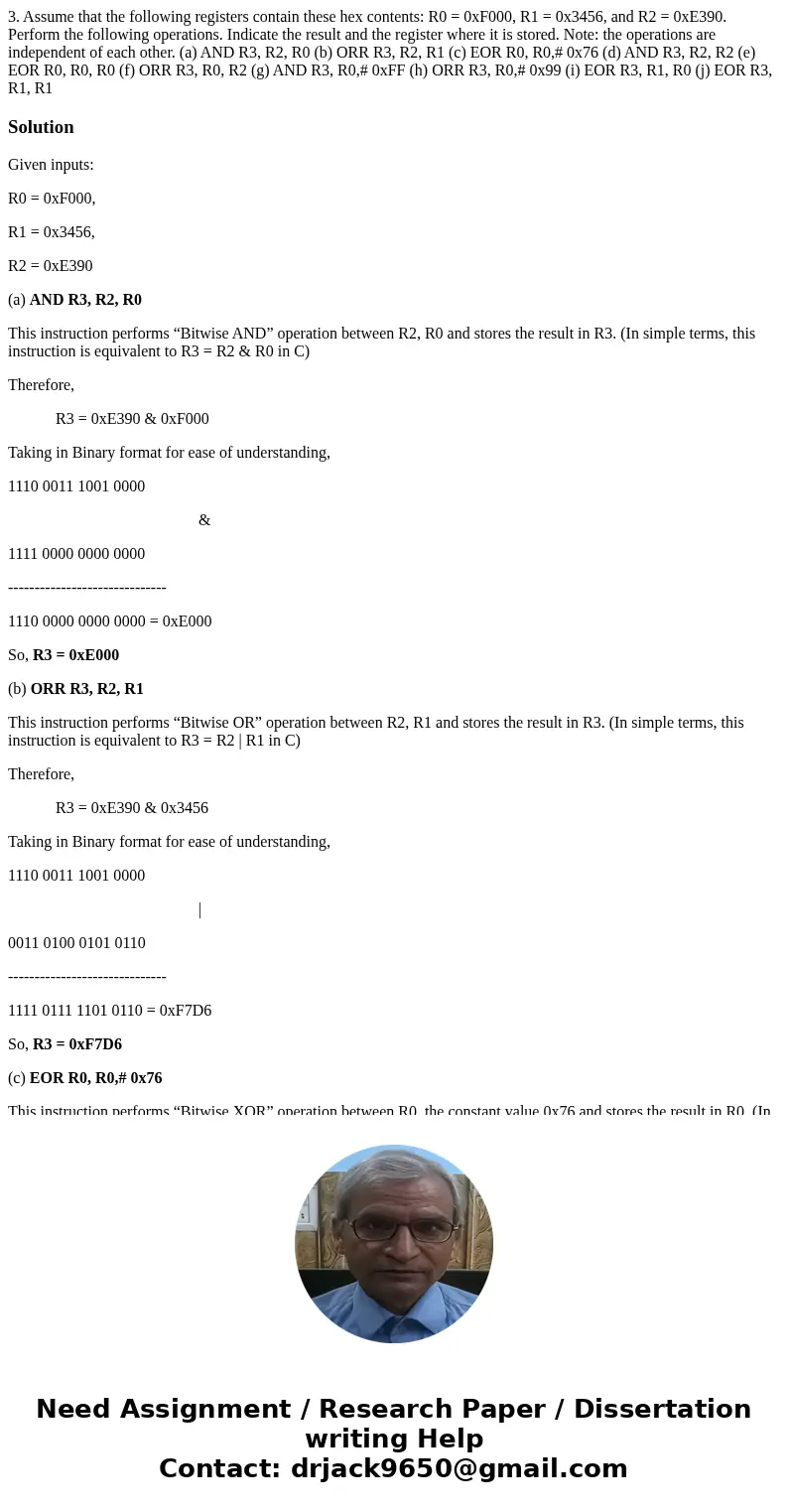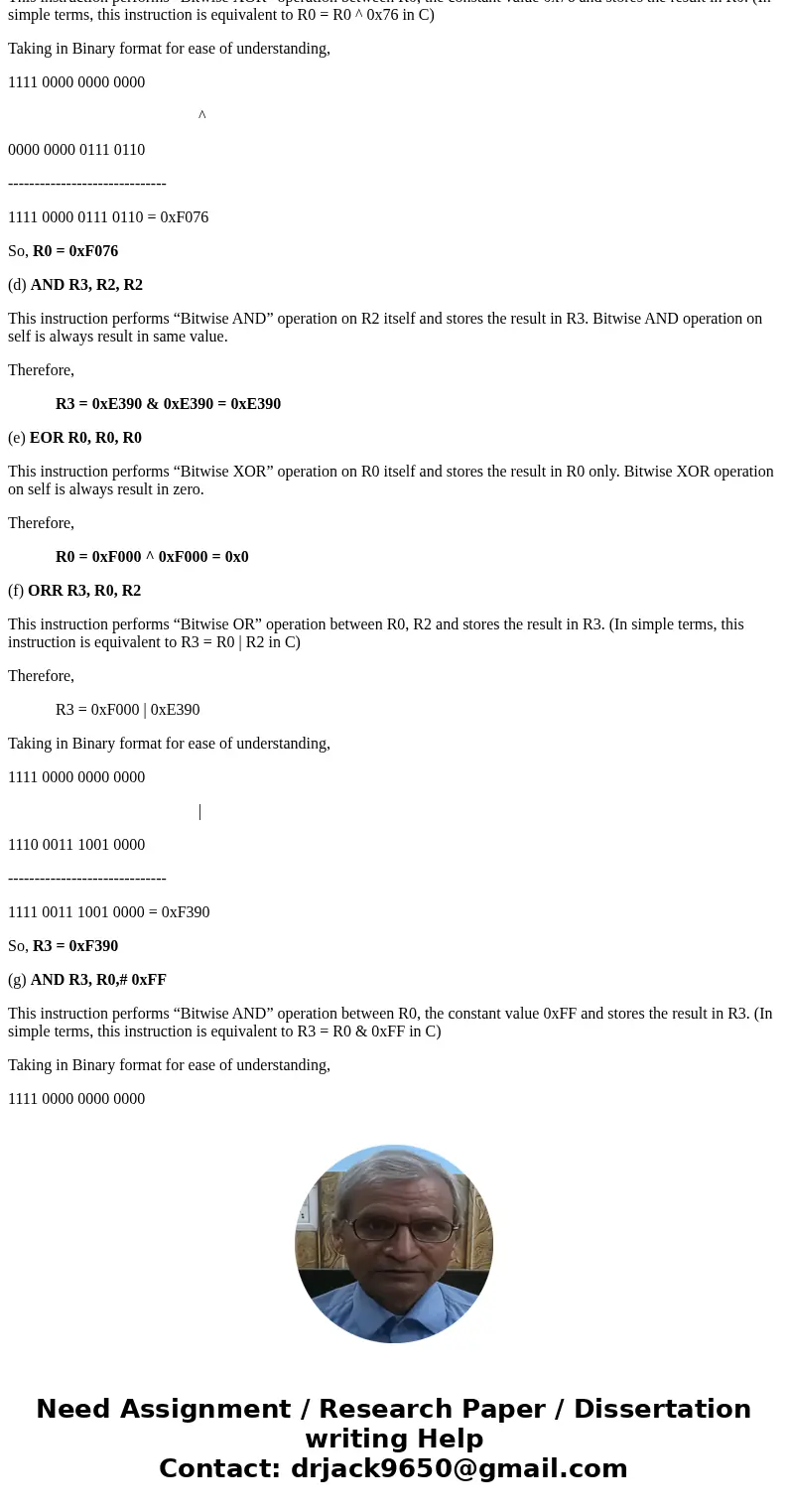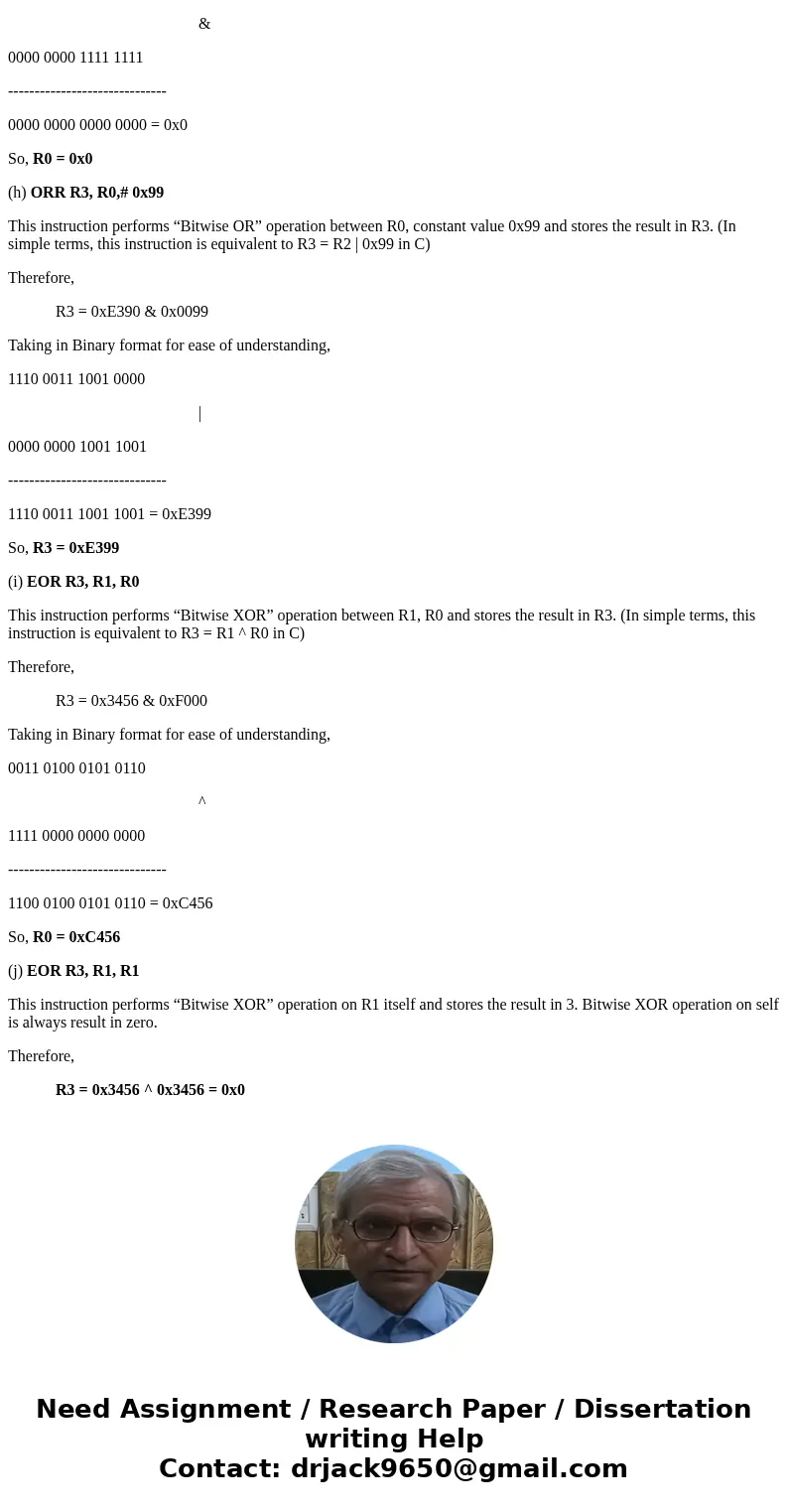3 Assume that the following registers contain these hex cont
Solution
Given inputs:
R0 = 0xF000,
R1 = 0x3456,
R2 = 0xE390
(a) AND R3, R2, R0
This instruction performs “Bitwise AND” operation between R2, R0 and stores the result in R3. (In simple terms, this instruction is equivalent to R3 = R2 & R0 in C)
Therefore,
R3 = 0xE390 & 0xF000
Taking in Binary format for ease of understanding,
1110 0011 1001 0000
&
1111 0000 0000 0000
------------------------------
1110 0000 0000 0000 = 0xE000
So, R3 = 0xE000
(b) ORR R3, R2, R1
This instruction performs “Bitwise OR” operation between R2, R1 and stores the result in R3. (In simple terms, this instruction is equivalent to R3 = R2 | R1 in C)
Therefore,
R3 = 0xE390 & 0x3456
Taking in Binary format for ease of understanding,
1110 0011 1001 0000
|
0011 0100 0101 0110
------------------------------
1111 0111 1101 0110 = 0xF7D6
So, R3 = 0xF7D6
(c) EOR R0, R0,# 0x76
This instruction performs “Bitwise XOR” operation between R0, the constant value 0x76 and stores the result in R0. (In simple terms, this instruction is equivalent to R0 = R0 ^ 0x76 in C)
Taking in Binary format for ease of understanding,
1111 0000 0000 0000
^
0000 0000 0111 0110
------------------------------
1111 0000 0111 0110 = 0xF076
So, R0 = 0xF076
(d) AND R3, R2, R2
This instruction performs “Bitwise AND” operation on R2 itself and stores the result in R3. Bitwise AND operation on self is always result in same value.
Therefore,
R3 = 0xE390 & 0xE390 = 0xE390
(e) EOR R0, R0, R0
This instruction performs “Bitwise XOR” operation on R0 itself and stores the result in R0 only. Bitwise XOR operation on self is always result in zero.
Therefore,
R0 = 0xF000 ^ 0xF000 = 0x0
(f) ORR R3, R0, R2
This instruction performs “Bitwise OR” operation between R0, R2 and stores the result in R3. (In simple terms, this instruction is equivalent to R3 = R0 | R2 in C)
Therefore,
R3 = 0xF000 | 0xE390
Taking in Binary format for ease of understanding,
1111 0000 0000 0000
|
1110 0011 1001 0000
------------------------------
1111 0011 1001 0000 = 0xF390
So, R3 = 0xF390
(g) AND R3, R0,# 0xFF
This instruction performs “Bitwise AND” operation between R0, the constant value 0xFF and stores the result in R3. (In simple terms, this instruction is equivalent to R3 = R0 & 0xFF in C)
Taking in Binary format for ease of understanding,
1111 0000 0000 0000
&
0000 0000 1111 1111
------------------------------
0000 0000 0000 0000 = 0x0
So, R0 = 0x0
(h) ORR R3, R0,# 0x99
This instruction performs “Bitwise OR” operation between R0, constant value 0x99 and stores the result in R3. (In simple terms, this instruction is equivalent to R3 = R2 | 0x99 in C)
Therefore,
R3 = 0xE390 & 0x0099
Taking in Binary format for ease of understanding,
1110 0011 1001 0000
|
0000 0000 1001 1001
------------------------------
1110 0011 1001 1001 = 0xE399
So, R3 = 0xE399
(i) EOR R3, R1, R0
This instruction performs “Bitwise XOR” operation between R1, R0 and stores the result in R3. (In simple terms, this instruction is equivalent to R3 = R1 ^ R0 in C)
Therefore,
R3 = 0x3456 & 0xF000
Taking in Binary format for ease of understanding,
0011 0100 0101 0110
^
1111 0000 0000 0000
------------------------------
1100 0100 0101 0110 = 0xC456
So, R0 = 0xC456
(j) EOR R3, R1, R1
This instruction performs “Bitwise XOR” operation on R1 itself and stores the result in 3. Bitwise XOR operation on self is always result in zero.
Therefore,
R3 = 0x3456 ^ 0x3456 = 0x0



 Homework Sourse
Homework Sourse